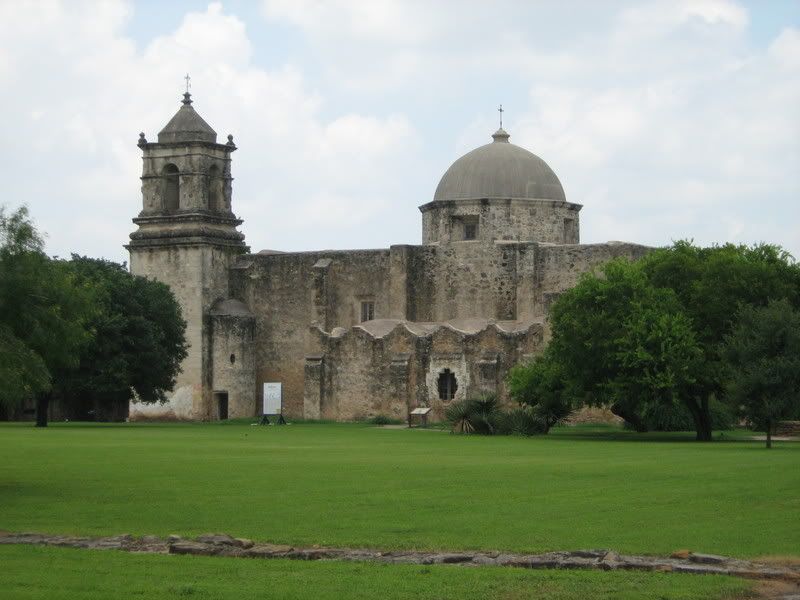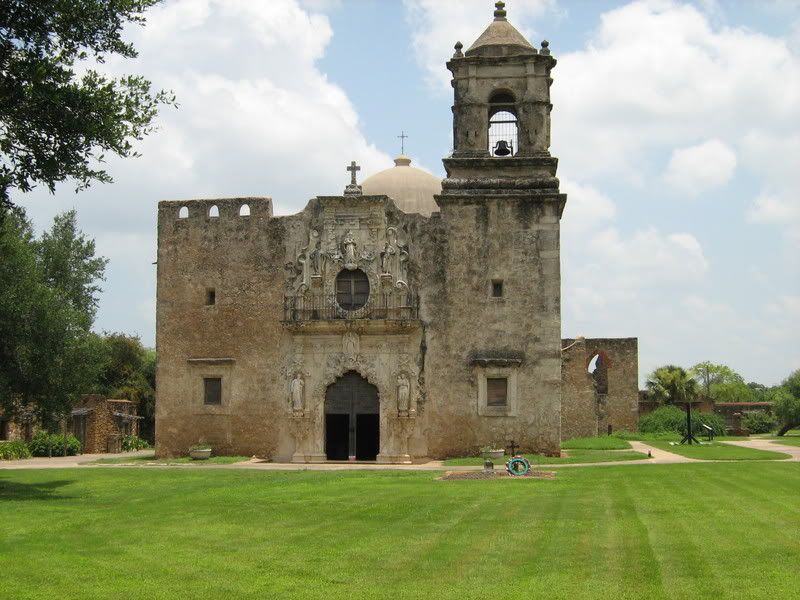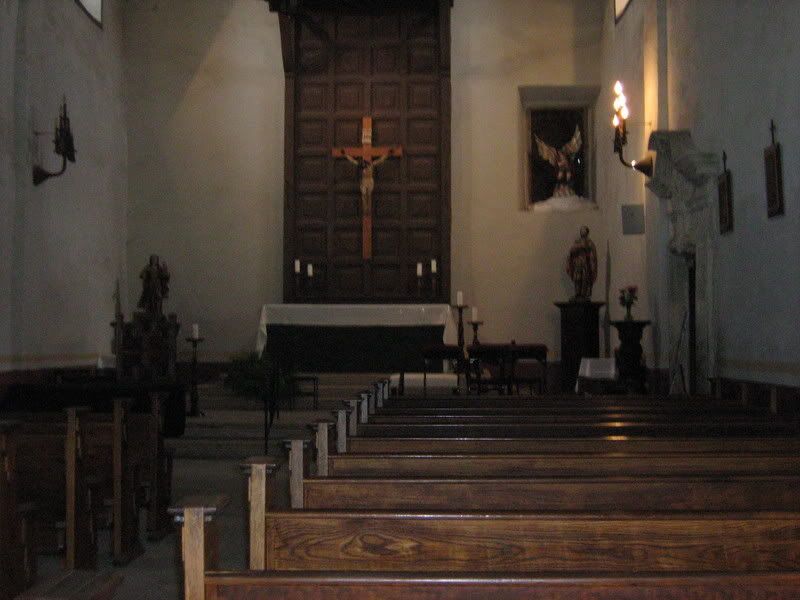The missions, fort, and settlement were established because the French were encroaching on territory that was nominally claimed by Spain and creating a population loyal to Spain would help solidify the claim. It could also function as forward base to defend the more settled parts on New Spain from Apache and Comanche attacks. The plan was to sufficiently integrate the local population into Spanish culture so that they would be loyal to Spain. The Church was willing to participate in order to bring the Gospel to those who had not received it.
Welcome to the Queen of the Missions

The land and buildings, except for the church buildings, belong to the State of Texas and are administed by the National Park Service The Park Administration building is to the left, with a good museum, a well produced film that is mildly effected by political correctness, and an excellent bookstore that has far more books than my book budget allowed.
The mission was originally established in 1720 by the Franciscan Friars and moved to it’s current and third site in the 1740’s. It was the largest of the missions and most successful. In the 1790’s the mission was secularized though the Franciscans stayed on as parish priests. The land given to the Indians. During the political troubles of the early 18tyh century the mission fell on hard times, the Franciscans were expelled and it operated intermittently as a parish until the 20th Century. In the 1930’s the Mission was restored as a WPA project to it’s late 1700’s plan and became a park. The new San Jose Parish is celebrating the 75th anniversary of it’s reestablishment and is back under the care of the Franciscans.

A well and behind it is the convent, the living quarters of the Friars, and the mission office.

A side view of the church looking north across the Mission Yard.
The mission yard depending on the time of year would have been a center of the different activities associated with a large agricultural operation.

The Front of the Church.
In the 1700's the buildings were painted in bright colors with a combination of Indian, Spanish and Moorish designs.

From descriptions the original altar and sanctuary had a much more baroque decoration. One steps into the church and as you subconsciously reach for the Holy Water font you realize this is no longer the National Park Service

An Earth Google photo.
The Church and Convent are on the right of the yard. The buildings in the bottom right are the modern parish offices. The indians lived in rooms along the side of the walls. The walls were built to keep out Apache and Comanche raiders. Like walls of this type every where, it allowed the most number of people to get a good nights sleep with a minimum guard force as well as provide confidence you would not wake up to hostile warriors in your front door. The Indians formed a militia company with indians as NCO's and officers to defend the mission with two or three Spanish soldiers as trainers, much like National Guard technitions today.
Also see Mission San Antonio de Valero “The Alamo”

2 comments:
Aren't those missions something ? I am always amazed when I visit them: even with Indian labor, they must have been prodigiously expensive constructions for the Spanish.
The photographs are beautiful.
El Jefe
Thanks. The missions are amazing.
I get the impression that after the initial startup costs the Spanish crown expected the mission to be self-sufficient. At least part of the cost of the wall seems to be internally generated.
Building a Church as the center of the community and a granary as economic necessity is one thing, but to divert enough labor to build those walls could only have been possible if there was a real threat.
Post a Comment